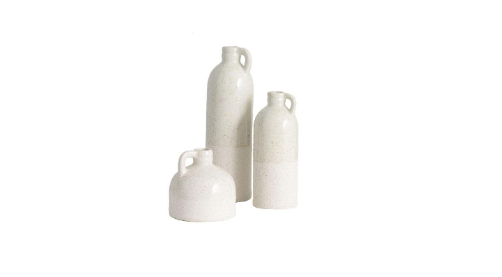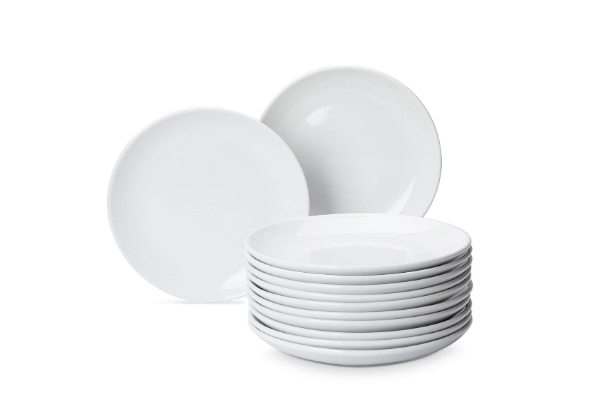
What Can Ceramics Make?
Ceramics is a general term for pottery and porcelain. Traditional ceramics, also known as ordinary ceramics, are products fired with clay and other natural silicates as the main raw materials. Modern ceramics are also called new ceramics, fine ceramics or special ceramics. Commonly used non-silicate chemical raw materials or synthetic raw materials, such as oxides (alumina, zirconia, titanium oxide, etc.) and non-oxides (silicon nitride, boron carbide, etc.). Ceramics have many advantages such as excellent insulation, corrosion resistance, high temperature resistance, high hardness, low density, and radiation resistance, and have been widely used in various fields of the national economy. Traditional ceramic products include daily-use ceramics, architectural and sanitary ceramics, industrial art ceramics, chemical ceramics, electrical ceramics, etc., with a wide variety and different properties. With the rise of high-tech industries, various new special ceramics have also achieved great development, and ceramics have gradually become excellent structural materials and functional materials. They have higher temperature resistance, mechanical properties, special electrical properties and excellent chemical resistance than traditional ceramics.
Decorations
Ceramics can be made into decorative handicrafts. From ancient pottery to modern sculpture, ceramics have been used to create beautiful and intricate pieces that have stood the test of time. or a long time, ceramic vases have been used to add a touch of home decoration bright colors. Ceramic decoration are chemically resistant and can be used for both indoor and outdoor decoration. Ceramic decorations include ceramic vases, ceramic flower pots, ceramic candle jars, ceramic piggy banks, ceramic oil burner and so on.
Tablewares
Ceramics are also used as tableware. It is one of the most used materials for tableware. Ceramic tableware is environmentally friendly and hygienic. The surface of ceramic tableware is smooth and easy to clean. Ceramic tableware has various patterns, and various tableware of different shapes can be produced. The soil can be shaped into various shapes, whether it is mugs, bowls, plates, tea set, etc., can be made of ceramics. People often use a whole set of ceramic tableware, a set of tableware with similar patterns, echoing each other, and it is a landscape at home. . Ceramic tableware is durable, slow heat transfer, and not easy to burn your hands. Porcelain ware has certain effects of acid, alkali, and salt resistance, and it is not easy to chemically react with these substances, and it will not rust and age. At the same time, it also has the characteristics of slow heat transfer, and it is not easy to burst when subjected to rapid heating and sudden cooling changes of a certain temperature difference.

Building materials
Ceramics are also commonly used in architecture and building construction. Ceramic tile is a kind of acid and alkali-resistant porcelain or stone, construction or decoration materials formed by grinding, mixing, pressing, glazing and sintering of refractory metal oxides and semi-metal oxides. It’s tiles. Its raw materials are mostly made of clay, quartz sand, compressed after high temperature, etc., and have high hardness. Ceramic tile is a popular choice for floors and walls because of its durability and moisture resistance. They can also be used as roof tiles or as part of building facades.
Mechanical components
Ceramics are also valued for their mechanical properties. Ceramics made at high temperature and pressure are very hard and resistant to wear, making them ideal for use in mechanical parts. Often used as brake pads, ceramic brake pads are composed of ceramic fibers, non-ferrous filler substances, adhesives and a small amount of metal, including mineral fibers, aramid fibers and ceramic fibers (because steel fibers will rust, produce noise and dust, so cannot meet the requirements of the ceramic type formula), lighter in color and more expensive than other brake pads, ceramic type brake pads are cleaner and quieter, and provide excellent braking performance without wearing out the mating parts.
Electronics industry
In the electronics industry, ceramics are often used as insulators and capacitors. Ceramic insulators have small dielectric constant, low dielectric loss, high mechanical strength, and high dielectric strength, insulation resistance and thermal conductivity. Commonly used ceramic insulators are high alumina porcelain, steatite porcelain, etc. There are many new varieties of ceramic insulators. At present, aluminum nitride porcelain and silicon carbide porcelain are being researched and developed. Their common feature is high thermal conductivity.
Medical field
Ceramics are also commonly used in the medical field. Ceramic materials are biocompatible, meaning they are not harmful to living tissue, making them ideal for use in implants and prosthetics. They are also used in dental applications, including dental implants and crowns. Ceramic teeth are an ideal restoration. It is made of a ceramic base first, and then covered with low-melt porcelain powder similar to natural teeth on its surface, sintered and fused in a vacuum high-temperature porcelain furnace, so it has high strength and the appearance of a porcelain crown. It is characterized by the ability to restore the shape and function of the tooth, strong fracture resistance, realistic color and appearance, smooth surface, strong wear resistance, no deformation, and stable color. A successful ceramic restoration should be lifelike in shape and stable in color. Acid and alkali resistant, it is a permanent restoration.
Conclusion
Ceramics are a versatile material with countless applications in modern society. From art and architecture to engineering and medicine, ceramics have proven themselves to be a valuable resource. While they are not without limitations, advances in processing techniques and continued research into their properties are opening up new possibilities for this ancient material.






